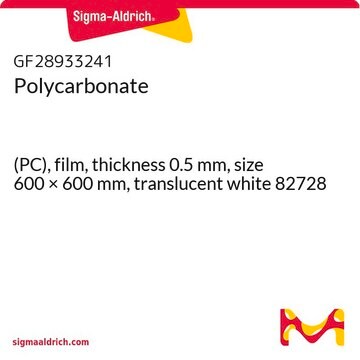GF76983328
Copper
tube, 500mm, outside diameter 2.0mm, inside diameter 1.6mm, wall thickness 0.2mm, as drawn, 99.9%
Sinonimo/i:
Copper, CU007375
About This Item
Prodotti consigliati
Saggio
99.9%
Forma fisica
tubes
Produttore/marchio commerciale
Goodfellow 769-833-28
Resistività
1.673 μΩ-cm, 20°C
L × spess. parete
500 mm × 0.2 mm
D.E. × D.I.
2.0 mm × 1.6 mm
P. eboll.
2567 °C (lit.)
Punto di fusione
1083.4 °C (lit.)
Densità
8.94 g/mL at 25 °C (lit.)
Stringa SMILE
[Cu]
InChI
1S/Cu
RYGMFSIKBFXOCR-UHFFFAOYSA-N
Descrizione generale
Note legali
Codice della classe di stoccaggio
13 - Non Combustible Solids
Classe di pericolosità dell'acqua (WGK)
WGK 2
Punto d’infiammabilità (°F)
Not applicable
Punto d’infiammabilità (°C)
Not applicable
Certificati d'analisi (COA)
Cerca il Certificati d'analisi (COA) digitando il numero di lotto/batch corrispondente. I numeri di lotto o di batch sono stampati sull'etichetta dei prodotti dopo la parola ‘Lotto’ o ‘Batch’.
Possiedi già questo prodotto?
I documenti relativi ai prodotti acquistati recentemente sono disponibili nell’Archivio dei documenti.
Il team dei nostri ricercatori vanta grande esperienza in tutte le aree della ricerca quali Life Science, scienza dei materiali, sintesi chimica, cromatografia, discipline analitiche, ecc..
Contatta l'Assistenza Tecnica.



